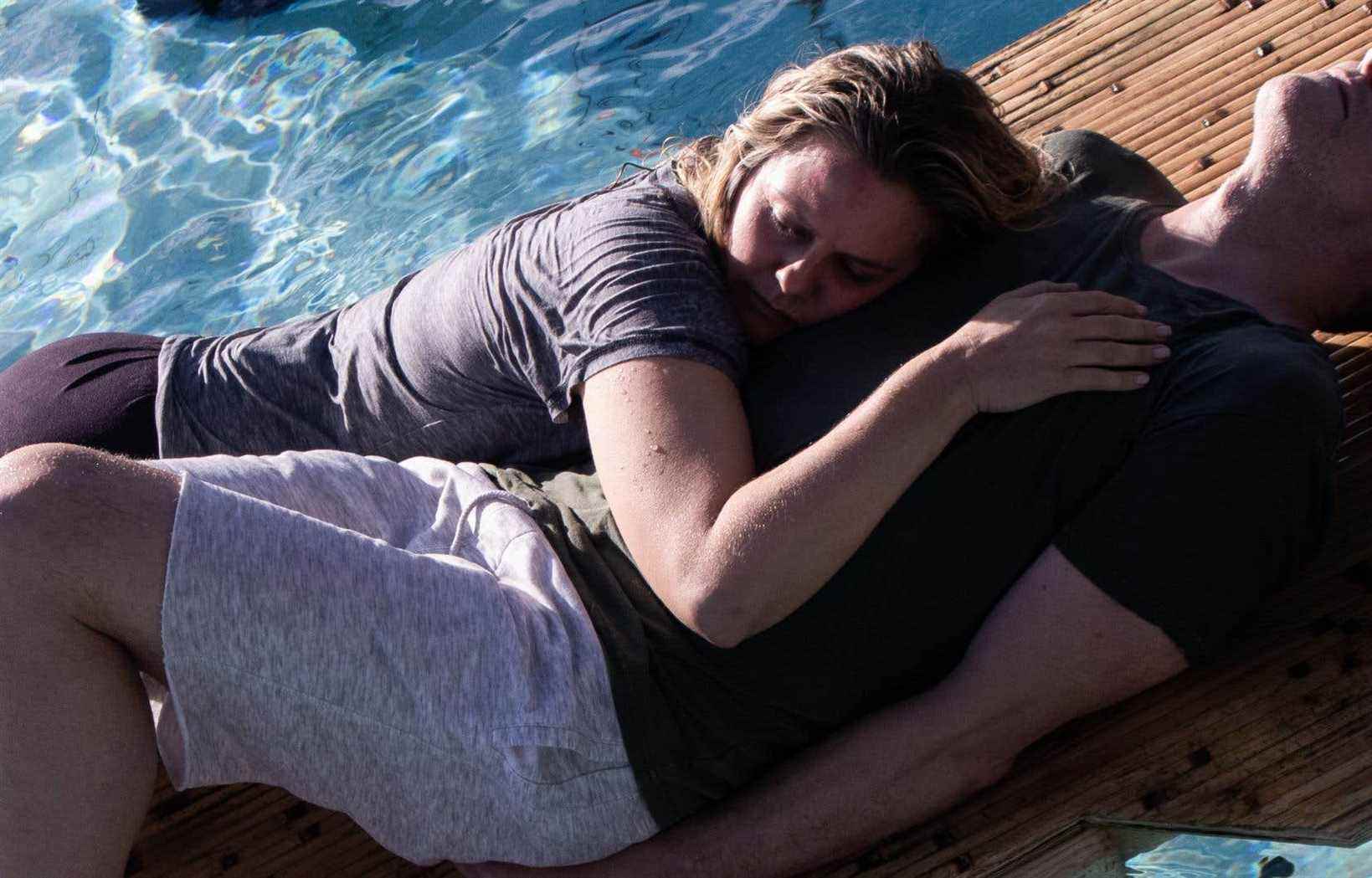In the languor of the ocean, a young woman stands still, happy to float there, peaceful. Menacing notes then swell, and the image hitherto marked by serenity suddenly takes on a threatening character. Seen from the depths, the swimmer is now a figure of prey. Emblematic, this sequence of jaws (Jaws), by Steven Spielberg, has been revisited to satiety, the “shark movie” having since become a cinematic subgenre in its own right.
Often shredded by critics, these productions nevertheless register interesting profits most of the time. On VOD Friday, The Shark, by Le-Van Kiet, is the most recent title to hope to make money by spilling blood in the water. However, if the past is a guarantor of the future, financial success, however modest, is assured. How to explain this popularity?
In fact, and horror in all its diversity is there to prove it, human beings like to be afraid. To fully understand the attraction of the shark film, we must still go back to jaws, who, in 1975, is widely believed to have invented the blockbuster modern summer. In addition to his incredible technical brilliance, jaws had the genius to combine several old hauntings into a single predator – all the films that followed took note of it.
First there is the dull fear linked to a state of vulnerability, as when swimming, surfing or diving in the sea. Then there is the fear of the void, of what is unfathomable, and therefore unknown, such as this seabed that we can no longer distinguish when we move away from the shore: anything can arise from it.
The shark’s mouth itself, as Nicolas Dufour explains in an essay by Time, refers to immemorial fears. “His tool, his very essence, is his jawbone. Without this gap filled with razor-toothed teeth, this extraordinary crushing device, the shark is only one fish among others. Its greatness comes from its greedy cavity, its insatiable appetite to gobble up humans. This monster comes from the depths, obviously, but also from the past. The mouth that devours men is an old Christian motif. »
Three trends
Three tendencies emerge within the film of sharks, and one of them is precisely characterized by narratives where the characters are on vacation or indulge in hobbies, and are thus “vulnerable” in their carelessness, like the couple forgotten at sea in Open Water (black ocean, 2004), the band of friends shipwrecked on the high seas in The Reef (2010), the isolated surfer on a reef in The Shallows (The shallows, 2016), the two sisters trapped in a cage on the bed of the ocean in 47 Meters Down (Survival instinct, 2017), the group of friends exploring submerged but uninhabited caves in the sequel 47 Meters Down: Uncaged (Survival instinct. trapped, 2019)… With her husbands lost on the ocean, The Shark (review in box) is part of this trend.
Each time, the happiness of the beginning gives way to anguish, then to terror. The second trend consists of a variation of the idea that the human who wrongly believes himself to be stronger than nature runs to his loss: we think of this aquatic complex in Jaws 3-D (Jaws 3, 1983), to this scientist who has the misfortune to create a race of superintelligent sharks on an oceanic islet in Deep Blue Sea (Terror under the sea, 1999), to those other scientists who allow a prehistoric shark to come out of its abyss in The Meg (Megalodon, 2018)…
The third trend, psychotronic this one, brings together titles like Mako: the Jaws of Death (1976), Z movies of the type Sharknado, Shark Attack, Mega Shark, Sand Sharks, Ghost Sharks… So many nanars (with sequels) produced like industrial sausage, for the simple reason that a lot of people eat them. In this case, however, the prospect of laughing at these atrocious films probably outweighs the desire to be afraid.
Instinctive response
Apart from this third tendency, the shark film turns out to be particularly skilful — and the “august” dimension of the fears it channels certainly has a lot to do with it — in coming to “mix up” the public in a very concrete way. In The New Yorker, Pauline Kael declared for example: “In jaws, which is perhaps the most gleefully evil horror movie ever made, disasters don’t happen like they do in most disaster movies, and your guts never rest according to a set schedule. »
In the Chicago Sun-Time, Roger Ebert wrote: “Rarely, but sometimes, it happens that a film has a real physical effect on you. It foils your defenses and tricks the “it’s just a movie” reflex and creates a visceral feeling that might as well be real. Open Water had that effect on me. »
In The Guardian, Jordan Hoffman confided for his part: “ The Shallows is a film that makes you want to scream at the screen, and if the pretext [du film] is ridiculous, it is anything but stupid. “”Guts”, “visceral feeling”, “screaming at the screen”: each time, the body as much as the spirit respond instinctively to these scenarios which almost always depict isolated beings, in one way or another. another, in the middle of the blue desert, at the mercy of the sharp fangs of this silent mastodon whose milky eyes turn black when it attacks.
Ultimately, it’s because it swims in these primal fear zones that the shark movie elicits such intense reactions. And even if it means being afraid, you might as well be afraid for good. This explaining that, whatever its quality, we don’t watch a shark movie: we devour it.
